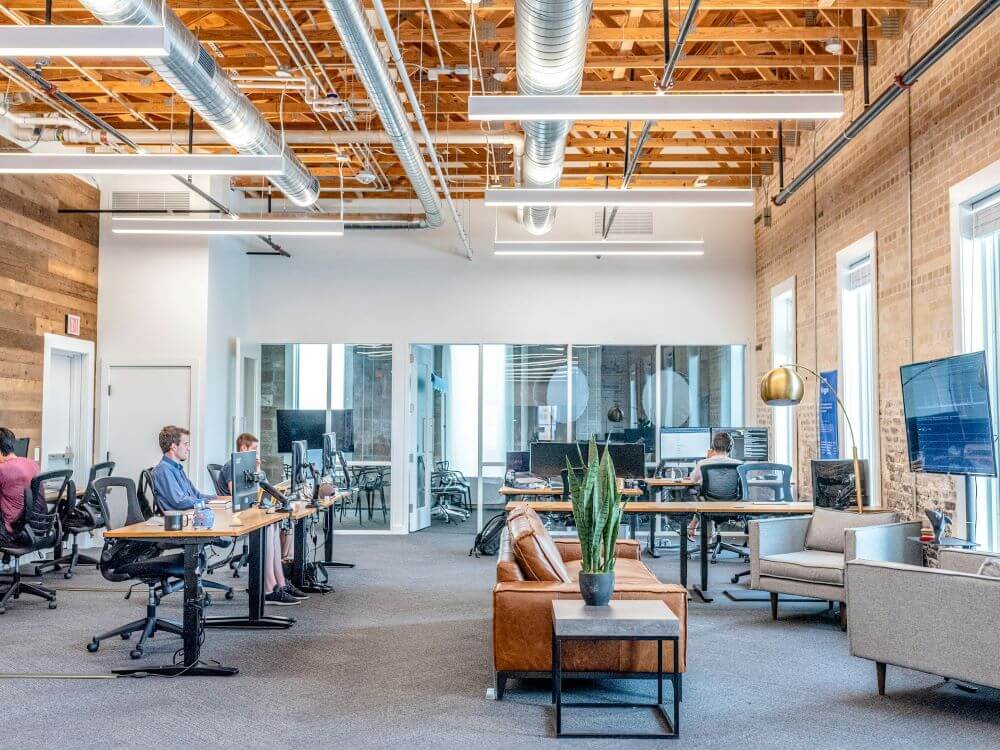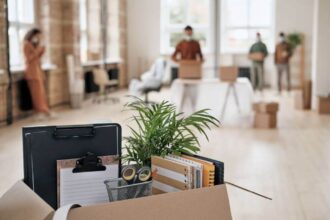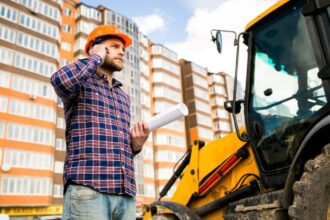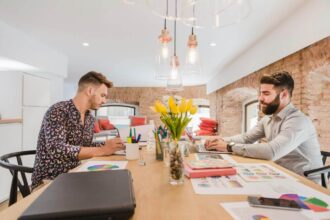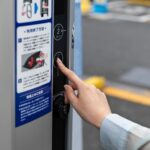Workplace design has come a long way, and no one can deny its impact on business success.
Seasoned entrepreneurs know that businesses traded dark, wood-panelled walls, florescent lights, and thick carpets for welcoming décor, collaborative offices, and abundant natural light. And let’s not forget that workplaces now often enjoy a new level of workplace technology–a clear upgrade from the past offices. Some companies even choose to rent a room in collaborative workplaces to encourage interaction, socialising, and save on expenses.
Whether you’re planning to have your own building or share a space with another brand, it’s worth considering modern fine art for sale online to help decorate the premises. The size of your business may influence your decision, but one thing remains constant: the workspace plays a significant role in business success. Of course, other factors like customer experience, financial management, and the quality of products or services also contribute. However, in this article, we’ll focus on the often-overlooked yet substantial impact that the physical work environment can have on corporate success.
Why is workspace design important?
It’s only natural for workspace design to evolve, as everything does when it comes to business – it’s a sign that people’s preferences and needs change, and companies need to keep up. Workplace culture moved towards prioritising the work-life balance, with technology enabling people to work remotely. Employees expect different things from their employers these days. And so do customers. Namely, they are in search of corporate spaces that meet their needs.
Nowadays a well-designed workplace isn’t crucial only for homing your employees, but also for boosting your revenue and improving the hiring process. A study from YouGov reveals that 85% of the 2000+ people surveyed believe that people visiting a company’s headquarters will judge the brand based on the interior design. Additionally, those in search of a new job will prefer a company that has a well-designed workplace because they want to feel comfortable during the time they work at the office. Hence, your space’s design could mean the difference between recruiting the right talent for your company or not.
The present workplace design is the result of the last generations’ needs and work style and meets the needs of present but also future talent.
How do you design a workplace that makes people want to spend more time inside?
A well-designed space will attract both talent and clients, so it’s a win-win. However, as a business owner, you should consider some aspects of creating a workspace where people feel welcomed and want to spend more time.
Define what you offer to your clients
The key to figuring out how to design a space that appeals to your clients is to identify their needs so you can actually serve them. Your clients have different needs compared to your workers, so you will have to recreate their journey at your headquarters. They usually need a welcoming waiting space where they can find snacks and fresh drinks, entertainment like a TV, books, magazines, and maybe even a pet that helps them spend the time in a more engaging way. Define what your client’s needs are and evaluate what your space offers at the moment so you can identify the changes you should make.
Design a hybrid working space for your employees
Your headquarters should also serve your most valuable asset, your workforce. You can collaborate with an architect to design a co-working space where your employees can complete their tasks and also engage with clients if necessary. A great idea is to install modular workstations that can be easily adapted or moved, when the situation asks. If you want to modify the entire building you can go a step further and create adaptable floor plans and hotdesking, so you can expand the space if needed.
These days, you can hire talent from anywhere, so you should also ensure that your office includes tech-enabled resources that facilitate connecting with your remote employees.
Prioritise wellbeing
Wellbeing is essential these days, and it should go hand in hand with workspace design to attract and retain clients and make clients feel welcomed. An office with natural lighting, great air quality, and pleasant wall décor will empower a productive work environment. You want to showcase to anyone who enters your workspace that you are committed to providing them with the best conditions. Don’t neglect decorations because they have a great impact on how someone who enters your space the first time perceives it. Suppose your office is designed in a minimalist style; you can search and decorate it with fine art pieces; it will work wonderfully and have a positive impact on the inhabitants.
An aesthetically interesting area will help people feel more engaged in the environment. You can turn the office into a gallery where you display art meant to inspire your team. It’s a great idea to change the pieces periodically to prevent people from getting bored.
Large windows and skylights will maximise the amount of natural light that enters the space but also transform the wall art into centrepieces. Match the modern art pieces with biophilic design elements like natural materials and plants to create a sense of calm. And don’t forget about ergonomic furniture (standing desks, chairs, and additional furniture that ensures the daily comfort of the inhabitant.
Support activities
A great way to attract and retain talent is to create a work environment that encourages activities. It’s essential to beat monotony and give employees the opportunity to do something fun when they need a break from their tasks. The office can become a place they are looking forward to. Therefore, you should focus your effort on creating a collaborative and interactive space that fosters an inclusive and positive culture. Here are some suggestions:
– A mini gym where they can engage in physical activities
– Wellness space where they can take stretching breaks and practice Pilates or yoga
– Active furniture like balance ball chairs and standing desks
– Bathrooms with showers to encourage them to run or cycle to the office
– Entertainment area with board games and tennis and ping-pong areas.
What do you think of these ideas?







